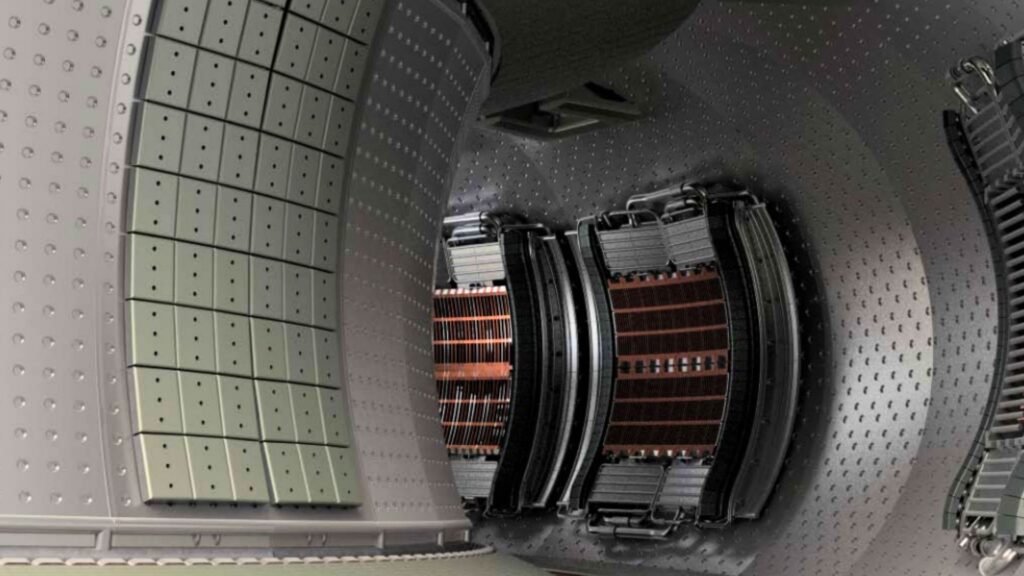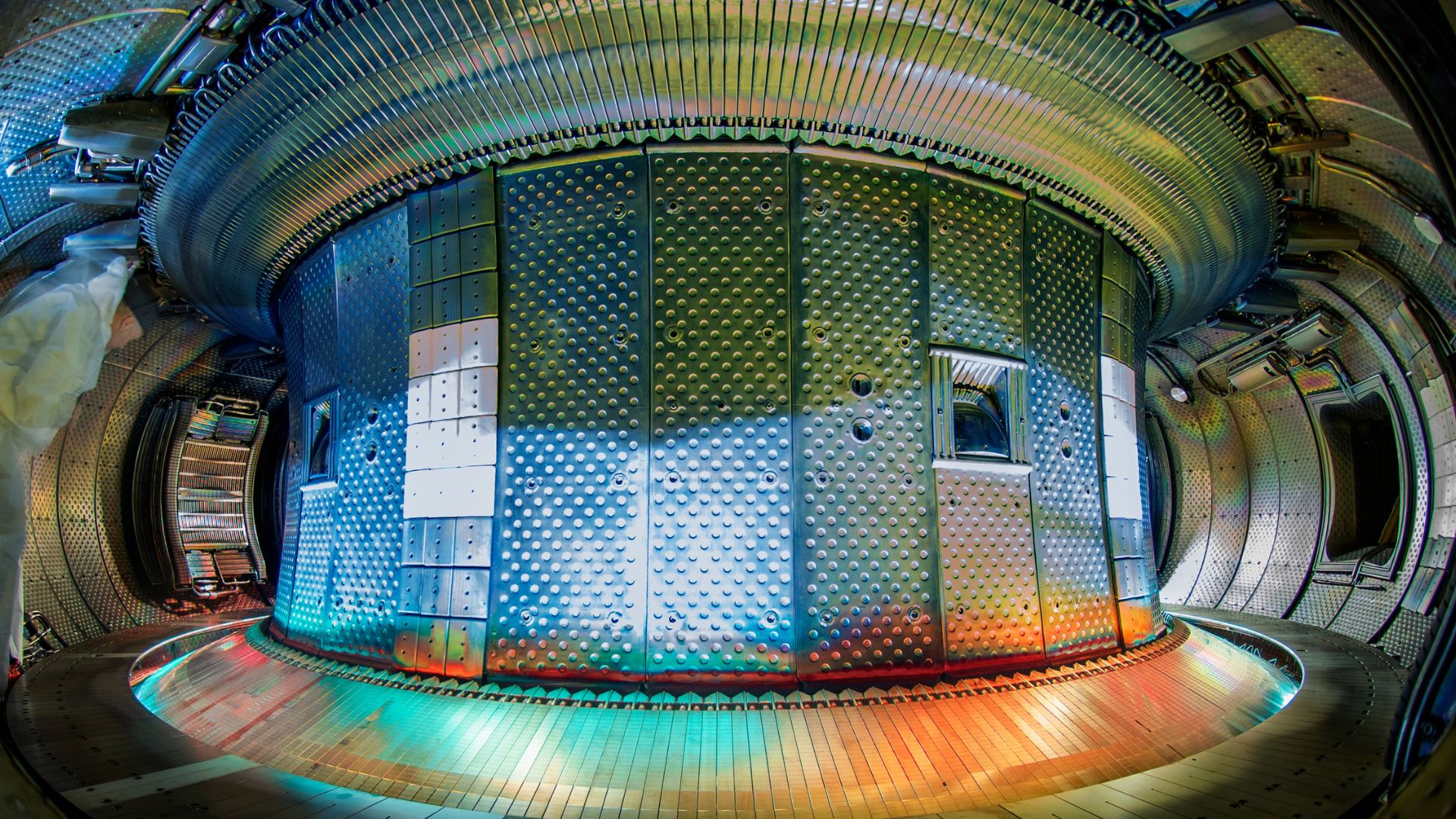An “artificial sun” reproduces the reactions at the heart of stars: nuclear fusion. The WEST reactor, based in France, remained on for 6 minutes at 50 million degrees.
This is the promise of carbon-free and almost unlimited energy. Over the century, many scientists are banking on nuclear fusion. To achieve this, it is necessary to create an “artificial sun”, which consists of reproducing, in the laboratory, the physical reactions taking place in the hearts of stars. One of these installations, based in France, has just broken a record.
Advertisement
In the south of France, and during a test carried out during this spring of 2024, the WEST reactor remained on at 50 million degrees for exactly 6 minutes, we learned on May 6. A ” spectacular result » according to Rémi Dumond, head of the Institute dedicated to fusion by magnetic confinement at the CEA. All this in a donut — a device more scientifically called a “tokamak”.
How does a tokamak work?
Tokamaks are described as donuts because these reactors take the shape of a ring. And for good reason, the dense and hot plasma that is created there is so hot that it must never touch the walls. To do this, magnetic coils create a “virtual cage” which circulates the plasma throughout this ring.

To create the fusion reaction itself, a few grams of two isotopes of hydrogen, deuterium and tritium, are inserted. When heated to a very high temperature, these two atoms will meet, fuse and cause the creation of a heavy helium nucleus. This is how we obtain a plasma – a new state of matter – which is extremely hot and very dense.
Nothing can escape from this magnetic cage, the plasma remains confined. Nothing, or almost nothing: the neutrons are not “charged”, so the magnetic coils cannot retain them. The neutrons hit the walls at very high speed. And this is good news: thanks to them, and to walls built for this purpose, we can recover this important part of the energy produced by the fusion reaction. This mainly involves transforming the accumulated heat into steam, in order to power turbines and thus produce electricity.
Advertisement
The problem is that this process contains so many steps, so many prerequisites and components, that it is not easy to obtain… and even less easy to maintain over time. Two difficulties arise: temperature and duration.
Why is 6 minutes huge?
The world's largest nuclear fusion reactor project is ITER, also located in the south of France, with a budget estimated at 19 billion euros. Still under construction, and scheduled for the 2030s, it will have to rise to 150 million degrees and manage to self-maintain. That is to say, generate more energy than is put into it so that the reactor maintains itself over time and is energy efficient. Until its first fusion reaction, most current reactors of the same type, smaller, continue to experiment in order to gradually resolve the physical problems of the process.


This is not the first time a nuclear fusion reactor has reached 50 million degrees. In Korea, the tokamak rose to 100 million degrees in 2023, but for 30 seconds then, in 2024, for 48 seconds. The 6 minutes obtained by WEST therefore constitute an important step in knowing how to maintain very hot plasma over time.
The WEST teams are particularly trying to resolve the question of the walls, which must both support the furnace generated by the plasma, but also allow energy to be recovered via the flow of neutrons. Initially, tokamaks used carbon walls, but these absorbed the used tritium (one of the two isotopes used as “fuel”). For a decade, WEST engineers have been testing tungsten, which does not have this defect, in addition to resisting heat well.
“It's the difference between trying to catch your kitten at home and trying to pet a wild lion. »
The ITER reactor will use this same material. However, it is a matter of understanding it as best as possible before then, because it also complicates other logistical aspects: “ The environment of tungsten walls is much harsher than using carbon », Indicates one of the project engineers, Lius Delgado-Aparicio, in the press release. “ It's the difference between trying to catch your kitten at home and trying to pet a wild lion. »
Neither WEST nor ITER will light your light bulbs. These are experimental reactors. But they must precisely open the way to the first so-called commercial installations, that is to say usable to actually generate electricity for industries and homes. The first tokamak was imagined in the 1940s and we should not imagine that one of them will be truly active and usable before the 2050s. This is a very long-term project.


Understanding matter and the Universe with physics
